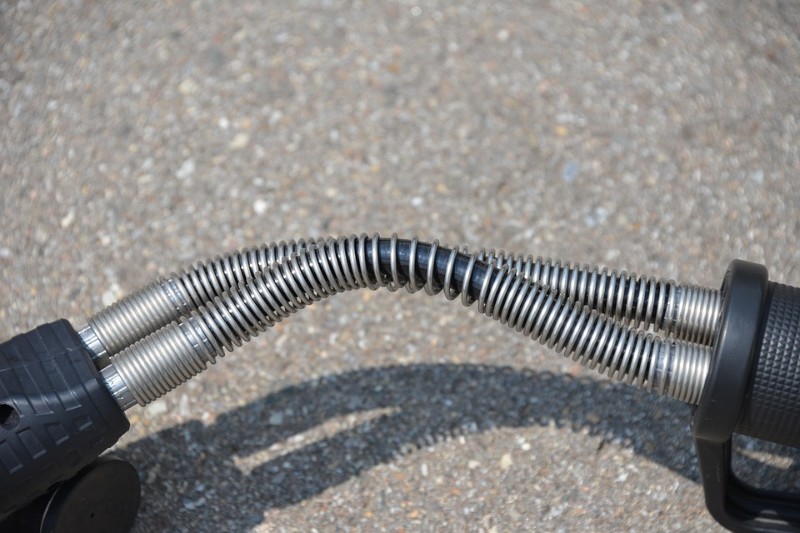The importance of a high-quality hydraulic hose is hard to overestimate. Its flexibility allows the system components to be properly positioned in the right places. The hose must be able to bend around corners, run through tight spaces and stretch across long distances while withstanding numerous pressures.
That’s why the hydraulic hose material can make or break the system. The number of available hose materials is impressive. However, choosing the right one depends on the type of fluid used in the system. High temperatures, fluid contamination, and concentration affect the compatibility of hose and fluid.
There is no such thing as the best hydraulic hose material. Each material has its pros and cons in regards to the rest of the system. In order to single out the best material, you need to monitor the conditions the hose operates under.
Three Hose Layers
Hydraulic hoses usually have three functional layers:
1. Tube
This layer carries the fluid. It’s usually made of rubber and plastic. The tube should resist chemical impact and corrosion.
2. Reinforcement
This layer helps the hose withstand internal and external pressure. It’s usually made of synthetic fibres, cables, and monofilaments.
3. Covers
This outer layer resists chemicals, abrasion, weather elements, and ozone. It’s commonly made of rubber, plastics and textiles.
Material Qualities
The outer layer of the hose is usually made out of synthetic rubber materials. One of the most popular outer layer materials is neoprene. It maintains flexibility at temperatures between -40°C and 100°C. Neoprene also manages to handle abrasion well at such temperatures.
Thermoplastic is an inner layer material, and is lighter than rubber. The inner tube can also be made out of co-polyester or nylon. Synthetic fibre is required for hoses that don’t conduct electricity, and aerial lift hoses.
In the majority of cases, the outer cover of is polyurethane. These hoses have a longer shelf life than rubber hoses. They have a better flexibility at temperatures as low as -60°C and higher UV and chemical resistance. However, thermoplastic hoses don’t usually come with large diameters (over 2 -3 cm).
It’s important to be aware of the manufacturing date of the hose. No matter how excellent the material is, it keeps its properties for about 10 years only.
Most hydraulic hoses are made from multiple materials. The most common ones are:
- Elastomers
- Fluoropolymers
- Silicone
- Thermoplastics
- Metal
- Composite of laminated structures
Choosing The Best Hose Material
When choosing the best hydraulic hose material for your purposes, you need to consider the following factors.
- Temperature – What are the temperatures the hose must handle?
- Size – What are the requirements for the outside and inside diameter?
- Liquid – What type of liquid will be transferred via the hose?
- Equipment specifications – Does the hose material fit the equipment?
- Elastomeric and rubber are usually chosen when excellent flexibility is needed.
- Fluoropolymer has a good shelf life, flexibility, and impressive chemical resistance.
- Thermoplastics have superior kink resistance.
- Metal hoses can handle high temperatures and extremely high pressures. They offer good flexibility as well.
Find Out More
At Hydrastar we can help you choose the best hydraulic hose material for your project. For more information about hydraulic and pneumatic systems, please download our free e-book How To Minimise Downtime With Pneumatic Systems.



